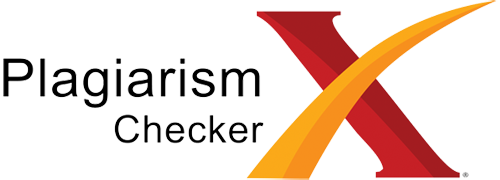Strategi Pengembangan Usaha pada UMKM SHE’S Kitchen dengan Pendekatan SOAR Analysis dan Business Model Canvas (BMC)
Abstract
Data from the Ministry of Cooperative, UMKM, and UB (Large Enterprises )in 2018 shows an increase in the number of MSMEs with a proportion of 0,98% of 64.199.60,6 and in 2019 it has grown to 65.471.134. The increased number of MSMEs is the reason for the importance marketing strategies by MSMEs too penetrate more and more market competition. This study aims to analyze the internal and external factors that influence the business development strategy in MSME SHE’S Kitchen using the SOAR (Strength, Opportunities, Aspiration, and Result and BMC (Business Model Canvas) Methods of strategic planning that identifies and analyze a strength an opportunity so that it can produce aspirations, goals, strategies, and commitment to get the resulting desire by the company. In addition, this research also aims to provide BMC tourism as well as appropriate business transformation designs to be developed in SHE’S Kitchen UMKM. The result of this study obtained 10 alternative strategies based on SOAR matrix analysis and there were additional 6 BMC Strategy components, namely key resources, value propositions, customer relationships, customer segments, and revenue streams.
Downloads
References
N. Kuswardhani, R. Agustian, and M. L. Plus, “Strategi Pengembangan Bisnis ‘Cofresh’(Coffee Fresh) Dengan Metode Bussines Model Canvas (Bmc) Dan Qspm (Quantitative Strategic Planning Matrix),” Agroindustrial Technol. J., vol. 4, no. 2, p. 167, 2021, doi: 10.21111/atj.v4i2.5077.
E. Rahim and R. Mohamad, “Strategi Bauran Pemasaran ( Marketing Mix ) Dalam Perspektif Syariah,” MUTAWAZIN (Jurnal Ekon. Syariah), vol. 2, no. 1, pp. 15–26, 2021, doi: 10.54045/mutawazin.v2i1.234.
M. A. Bora, “Analisa Kepuasan Penggunaan E-Learning Cloud Sekolah Tinggi Teknik (STT) Ibnu Sina Batam,” J. Ind. Kreat., vol. 1, no. 01, p. 55, 2017, doi: 10.36352/jik.v1i01.49.
Y. Subaktilah, N. Kuswardani, and S. Yuwanti, “Analisis Swot: Faktor Internal Dan Eksternal Pada Pengembangan Usaha Gula Merah Tebu (Studi Kasus Di Ukm Bumi Asih, Kabupaten Bondowoso),” J. Agroteknologi, vol. 12, no. 02, p. 107, 2018, doi: 10.19184/j-agt.v12i02.9276.
I. S. Dewi, I. K. Sihombing, M. I. Kurniawan, and Khairunnisa, “Analisis Strategi Pemasaran Berbasis Marketing Mix dan SWOT Analysis pada Usaha Pengeringan Asam Gelugur Di Tanjung Pura Kabupaten Langkat,” J. Bisnis Adm., vol. 8, no. 1, pp. 51–64, 2019.
A. K. Diantoro, Rohana, and R. S. Nasrulloh, “Analisis Strategi Pengembangan Klinik Pratama Bkm Xyz Yogyakarta Dengan Metode Quantitative Strategic Planning Matrix (Qspm),” J. Ilmu Pengetah. Sos., vol. 8, no. 7, pp. 2351–2352, 2021, [Online]. Available: http://jurnal.um-tapsel.ac.id/index.php/nusantara/index.
M. Ary and R. Sanjaya, “Strategi Perencanaan Dan Pengembangan Program Studi Menggunakan Analisis Swot (Studi Kasus Program Studi Sistem Informasi Ars University),” J. Tekno Insentif, vol. 14, no. 1, pp. 1–8, 2020, doi: 10.36787/jti.v14i1.198.
D. T. Santoso and Widyatmini, “Strategi Pengembangan Ekonomi Kreatif Melalui Analisis SOAR (Studi Kasus Pada Bisnis Clothing Solid Object),” vol. 15, no. April, pp. 58–66, 2021.
D. S. T. Manalu and I. M. Utami, “Strategi Pemasaran Buah Naga dengan Pendekatan Business Model Canvas (BMC) di PT. Trisna Naga Asih Kabupaten Subang,” vol. 1, no. 2, 2018.
 Abstract views: 53 ,
Abstract views: 53 ,  *.pdf downloads: 29
*.pdf downloads: 29














